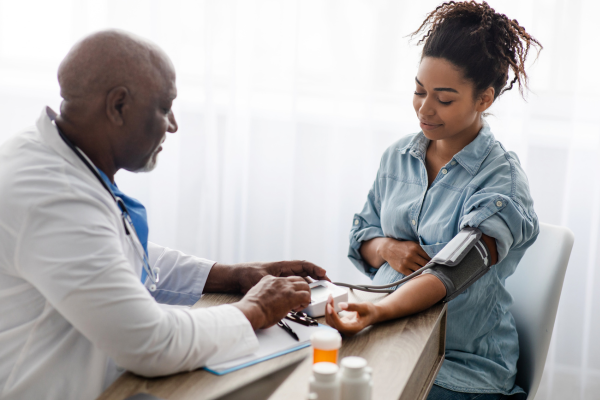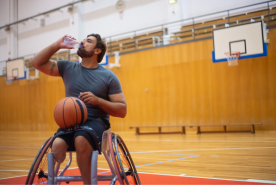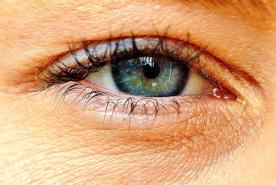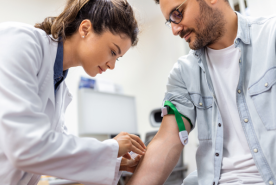November 14, 2024
Kidney disease is more common than you might think. Education is key. The more you know, the better you can protect your health. Join us as we explore the stages of kidney disease and hear from those who've experienced them firsthand.
Key Takeaways
Key Takeaways
1 in 3 adults in the US are at risk of kidney disease.
1 in 7 are already affected—but 90% don't know
Over 90,000 people are on the kidney waitlist.
Kidney Disease: What You Need to Know
The kidneys are important organs that filter waste and extra fluid from the body. They also help control the balance of vitamins and minerals, maintain blood pressure, and make hormones that help the body produce red blood cells. If the kidneys are damaged, they may not be able to perform these important jobs.
Kidney disease can occur at any age, but several factors can damage your kidneys and increase your risk.
These risk factors include:
- Diabetes
- High blood pressure
- Obesity
- Family history
- Kidney stones
Are you at risk of kidney disease? Take our one-minute quiz to find out.
Two simple tests can help determine if you have kidney disease:
- The Urine Albumin-Creatinine Ratio (uACR) test checks for albumin and creatinine in the urine. Albumin is a protein usually found in the blood. It doesn’t belong in the urine. Creatinine is a waste product that should be in your urine. High levels of albumin relative to creatinine in the urine may suggest kidney damage.
- Estimated Glomerular Filtration Rate (eGFR) is a calculation that estimates how well the kidneys are functioning. An eGFR of 90 or above is normal. An eGFR below 60 might suggest kidney disease, even if uACR is normal. The higher the eGFR number, the better.
Join the NKF Blog Newsletter
Get inspirational stories and kidney disease resources delivered to your inbox every month. You'll gain practical insights and expert advice to help you better understand and manage your kidney health no matter where you are on your kidney journey. Subscribe today.
Stage 1
At stage 1, the kidneys are still functioning well. eGFR is 90 or higher, but there are signs of kidney damage. These may include protein in urine, blood in urine, kidney stones, or other issues found in medical tests.
Symptoms are rare at this stage, but that doesn't mean the disease isn't there. If not managed properly, it can progress to further stages.
For Lily, who was born with a genetic disorder that caused inner ear and kidney issues, maintaining her kidney function is a top priority.
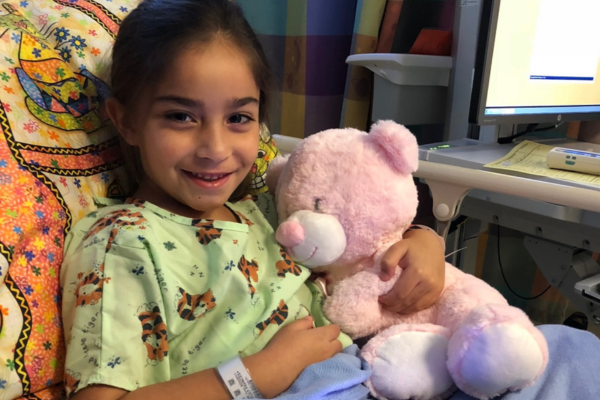
"Lily was diagnosed with the earliest stage of chronic kidney disease when she was six after a routine ultrasound," said Asha, Lily's mother. "She's twelve now and her kidney function is the same. We've taken many steps to help her maintain it. She gets her kidneys checked every four to six months. She’s learned how to pay attention to how she's feeling and make choices that are good for her body."
By making good lifestyle choices, Lily and her parents are helping ensure a bright future with less risk of kidney disease progressing.
Stage 2
People with stage 2 kidney disease have an eGFR between 60 and 89 with signs of kidney damage for three months or more.
People at this stage don't usually experience symptoms.
Lukas was diagnosed with stage two kidney disease when he was fourteen. He went to the hospital for heat stroke treatment and left with a kidney disease diagnosis. Lukas didn't let his diagnosis get him down–he used it as motivation to live life to the fullest.
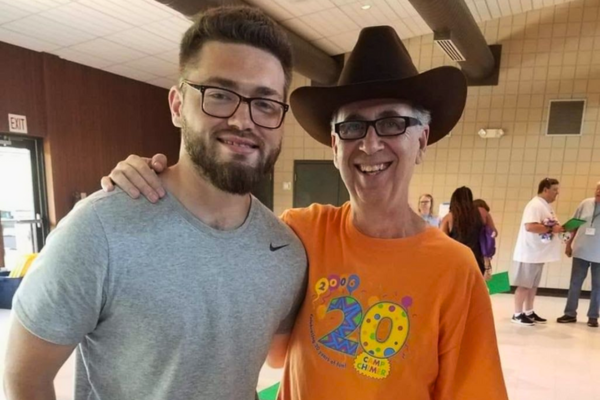
"I decided to use my diagnosis as a motive to live every day to the best of my abilities. Changing my lifestyle and taking all that medication wasn't fun, but it saved my kidneys. We were able to figure out what worked and devise a game plan," Lukas said. "Fifteen years later and I'm still at stage two kidney disease and possibly healthier than I was when I was first diagnosed."
Stage 3a and 3b
Stage 3a means mild to moderate loss of kidney function with an eGFR between 45 and 59.
Symptoms are uncommon but can include:
- Peeing more or less than usual
- Itchy skin
- Feeling tired
- Nausea
- Loss of appetite
- Unintentional weight loss
Janet was diagnosed with stage 2 kidney disease when her doctor used the outdated eGFR equation that included race. Janet insisted on a retest when she learned about the new race-free formula. Only then was she diagnosed correctly with stage 3a kidney disease.

"I had high blood pressure, a leading cause of kidney disease. I also had anemia and foamy urine, both indicators of my declining kidney health. I pushed for the retest," said Janet. “My correct staging makes all the difference in my diet and treatment. I wasn't afraid to advocate for myself. But what about those who don't have the resources? Had I not been someone who had access to the internet or didn't know about NKF, I could have gotten sicker more quickly.”
By taking her prescribed medication and changing her lifestyle, Janet has maintained her kidney function at stage 3a for years.
Others may progress to stage 3b with an eGFR between 30 and 44.
Symptoms may include:
- Peeing more or less than usual
- Itchy or dry skin
- Feeling tired
- Trouble concentrating
- Numbness or swelling in arms, legs, ankles, or feet
- Muscle aches or cramping
- Shortness of breath
- Nausea or vomiting
- Loss of appetite
The risk of kidney disease progressing and experiencing complications is higher at this stage.
Stage 4
Stage 4 means severe loss of kidney function with an eGFR between 15 and 29.
At this stage, people are at the highest risk for kidney failure. The risk of heart disease also increases. Lowering uACR levels may help reduce the risks.
Symptoms are more noticeable and can include:
- Peeing more or less than usual
- Itchy or dry skin
- Feeling tired
- Trouble concentrating
- Numbness or swelling in your arms, legs, ankles, or feet
- Muscle aches or cramping
- Shortness of breath
- Nausea or vomiting
- Loss of appetite
- Trouble sleeping
- Fishy smelling breath
After receiving emergency dialysis for a lupus flare-up, Jessica changed her lifestyle enough to counteract the damage. She ate a low-acidic diet, exercised, and took medications as directed. Her kidney function improved to stage 3, and she was able to stop dialysis.
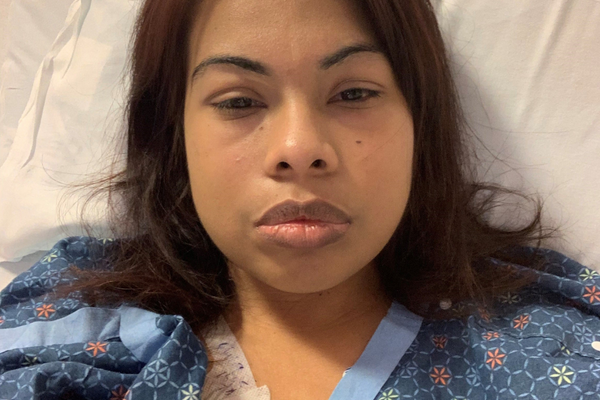
Then COVID-19 hit. Jessica's kidney function worsened after she caught the virus in late 2020. By March 2022, she was in stage 4.
"I had surgery to put a fistula on my left arm. I'm prepared for future dialysis. It's been a rollercoaster. I am now receiving chemotherapy for my lupus because nothing else is working," said Jessica. "But I am an extremely positive person. I'm going to keep on fighting. I know I'll get a kidney transplant someday."
Stage 5
Stage 5 is kidney failure or end-stage kidney disease (ESKD). At this stage, the kidneys are working at less than 15% of their normal capacity with an eGFR of 15 or below. While some may be able to delay dialysis, most will need it or a kidney transplant to survive.
In stage 5, symptoms are common and include:
- Peeing less often or not at all
- Itchy or dry skin
- Feeling very tired
- Trouble concentrating
- Swelling or numbness in arms, legs, ankles, or feet
- Muscle aches or cramping
- Shortness of breath
- Nausea or vomiting
- Loss of appetite
- Trouble sleeping
- Fishy smelling breath
The risk of complications like anemia, high potassium, or bone disorders is highest for people with kidney failure.
Christina was diagnosed with a mild form of kidney disease when she was a teenager. It progressed to kidney failure after she developed preeclampsia, dangerously high blood pressure, while she was pregnant.
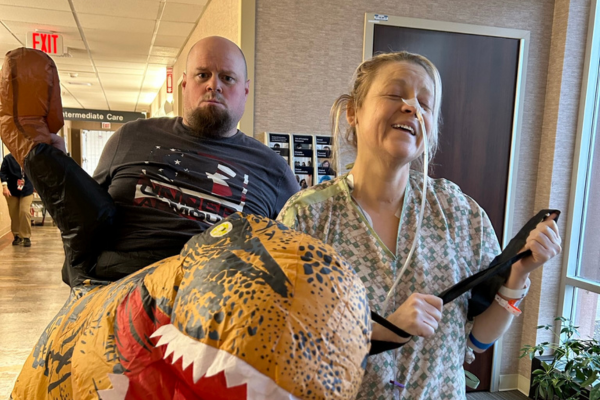
She received two transplants that failed within years of receiving them. Despite that, Christina built a life with her husband, Michael, and their children during that time. When it was time to start dialysis again, she decided to try it at home.
"I wasn't going to give up the life I had. I was traveling with Michael, camping with our girls, and being the mom I always wanted to be. I was present, and we were loving life. It wasn't acceptable to go to in-center hemodialysis," Christina said. "I may not be able to get a third transplant, but that is okay. My favorite thing to say is, "I don't live to do dialysis. I do dialysis to live.’”
Michael agrees.
"We have no problem with in-center dialysis, but it doesn't work for her. The biggest piece of advice I can offer is to stand up for yourself. It's amazing showing other care partners pictures of Christina in the mountains doing dialysis. We love pushing the envelope safely. We don't let her doctor tell her she can't do something. We ask how we can do it effectively and carefully."
Lifestyle Tips
Whether you have kidney disease or are at risk, there are many steps you can take to protect your kidney health.
- Manage risk factors: Keep conditions like diabetes and high blood pressure under control by following your doctor's recommendations. Regular check-ups can help monitor these conditions and prevent further kidney damage.
- Take medications as directed: Watch NSAIDs use and take medications exactly as instructed by your healthcare provider.
- Stop smoking: Smoking harms your kidneys. Quitting can improve your overall health and reduce the progression of kidney damage.
- Exercise: Exercise helps maintain a healthy weight, lowers blood pressure, and improves overall kidney function.
- Eat healthy: Eat a variety of vegetables, fruits, whole grains, fish, and lean meats. Cut back on processed foods and sugary drinks.
Have questions?
NKF Cares is a free patient information helpline staffed with trained specialists who will answer your questions and listen to your concerns. Call toll-free at 855.NKF.CARES (855.653.2273) or email nkfcares@kidney.org to get started.
